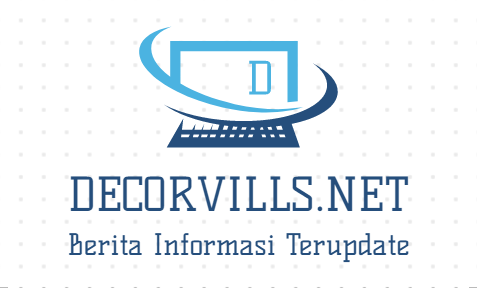There are several ways to rank insurance company size. Companies can be measured by their market capitalization (the company’s value on the stock exchange) or by using sales figures, such as net premiums written in a year or how many policies are sold.
The largest Insurance Company in the United States by Market Capitalization
Investors can purchase shares of publicly traded companies in the insurance industry. The largest insurance companies in 2018 by market capitalization on world stock exchanges are:
1. Non-Health Insurance Company
- Berkshire Hathaway (BRK.A) $308 billion
- China Life Insurance (LFC) $80 billion
- Alliance (AZSEY) $76.8 billion
- America International Group (AIG) $72.3 billion
- Ping An of China (PNGAY) $65.6 billion
- MetLife (MET) $59.4 billion
- AXA (AXA) $ 57.8 billion
- AIA Group Hong Kong (AAIGF) $54.4 billion
- ING Group (ING) $54.4 billion
- Zurich Insurance (ZURVY) $45.4 Billion
- (based on: Thompson Reuters)
2. Health Insurance and Managed Healthcare Companies
- United Healthcare (UNH) $91.8 billion
- Wellpoint (WLP) $34.3 billion
- Aetna (AET) $29.8 billion
- CIGNA Corp. (CI) $26.8 billion
- Humana (HUM) $21.1 billion
- Centene Corp. (CNC) $5.7 billion
- HealthNet, Inc. (HNT) $3.9 billion
- The $3.1 billion WellCare Health Plan (WCG).
- Healthspring (HS) $3.7 billion
- Molina Healthcare (MOH) $2.4 billion
- (Source: Thompson Reuters)
Not all insurance provider are openly traded. In truth, numerous insurance provider are organized as co-corporations where the policyholders of the taking part plans are basically component proprietors of the business.
The co-corporation design for insurance provider days back centuries, and there are specific advantages offered to policyholders that don’t exist with openly traded insurance provider (supply business).
The largest United States Insurance Company by Sales and Product Line
This is useful for distinguishing between the types of insurance, or lines, that are being considered when considering the largest insurance companies. Using sales data is helpful because some of the largest insurance companies in the United States are not publicly traded and therefore their market value cannot be easily ascertained.
1. Property & Casualty
Residential or commercial home mishap insurance provider compose plans that cover residential or commercial home such as realty, homes, various other cars and vehicles. They likewise compose plans associating with obligation that might occur because of mishaps or carelessness relates to the residential or commercial home to spend for lawful expenses or clinical problems arising from the event.
Top US property casualty companies in 2018 based on written net premiums (the amount of money a non-life policy is expected to receive over the term of the contract, minus commissions and fees).
- State Agricultural Group $64.6 billion
- Berkshire Hathaway (BRK.A) $46.0 billion
- Allstate Insurance Group (ALL) $30.6 billion
- Freedom Together $28.6 billion
- Progressive Insurance Group (PGR) $27.1 billion
- Tourist Group (TRV) $24.5 billion
- USAA Group $19.6 billion
- National Group $18.8 billion
- Farmers Insurance Group $14.3 billion
- America International Group (AIG) $14.2 billion
2. Life Insurance Company
The Life Insurance coverage Business guarantees to pay a round figure profit after the fatality of the guaranteed. Although actuarial scientific research has produced death tables to precisely approximate future plan responsibilities to be paid, having actually monetary stamina guarantees that these business have the ability to satisfy all their responsibilities while still being lucrative.
Life Insurance Companies in the US can be ranked by direct written premium (the number of new policies written directly and not reinsured). For 2018:
Company : Total Direct Premium : Shares
- Metropolitan Group (MET) – $ 12.6 billion – 7.87%
- Northwestern Mutual – $10.1 billion – 6.29%
- New York Life Group – $ 8.8 billion – 5.48%
- Prudential of America (PRU) – $ 8.6 billion – 5.33%
- Lincoln National – $ 6.9 billion – 4.30%
- MassMutual $ – 6.6 billion – 4.15%
- Aegon (AEG) – $ 4.6 billion – 2.90%
- Signatures $ – 4.4 billion – 2.84%
- State Farm $ – 4.0 billion – 2.73%
- Guardian Life Insurance Co. $ – 3.8 billion – 2.38%
- (Source: NAIC)
3. The best health insurance company
Health and wellness insurance provider offer plans to cover all or component of the policyholder’s clinical costs and health and wellness. Plans could be bought separately or with a company.
Practically, the Unified Specifies federal government is America’s biggest service company of health and wellness insurance coverage with Medicare, Social Safety and safety, and with Medicaid programs provided by each specify.
The largest non-government sponsored US health insurers as measured by total direct premiums collected in 2016 were:
Company – Total Direct Premium – Shares
- UnitedHealth Group (UNH) – $ 125 billion – 12.90%
- Kaiser Foundation Group – $ 72.6 billion – 7.46%
- Anthem Inc. Group – $ 59.8 billion – 6.15%
- Aetna Group (AET) – $ 54.3 billion – 5.58%
- Humana Group – $ 53.8 billion – 5.53%
- HCSC Group – $ 32.3 billion – 3.31%
- Centene Corp. Group – $ 25.7 billion – 2.64%
- Cigna Health Group (CI) – $ 24.0 billion – 2.47%
- Molina Healthcare Inc. Group – $ 17.8 billion – 1.83%
- Independence Health Group Inc Group – $17.0 billion – 1.75%
- (Source: NAIC)
Important Points of the Biggest Continental American Insurance Company
- Insurance provider are essential gamers in the worldwide monetary economic climate, although they might not be as essential as financial investment financial institutions or hedge funds.
- Insurance provider are available in all dimensions and focus on various lines of plans, from health and wellness and life to mishap and residential or commercial home.
- Right below we contrast a few of the biggest insurance provider by market capitalization and costs sales.
 Decorvills.net | Insurance and Investment Blog
Decorvills.net | Insurance and Investment Blog


